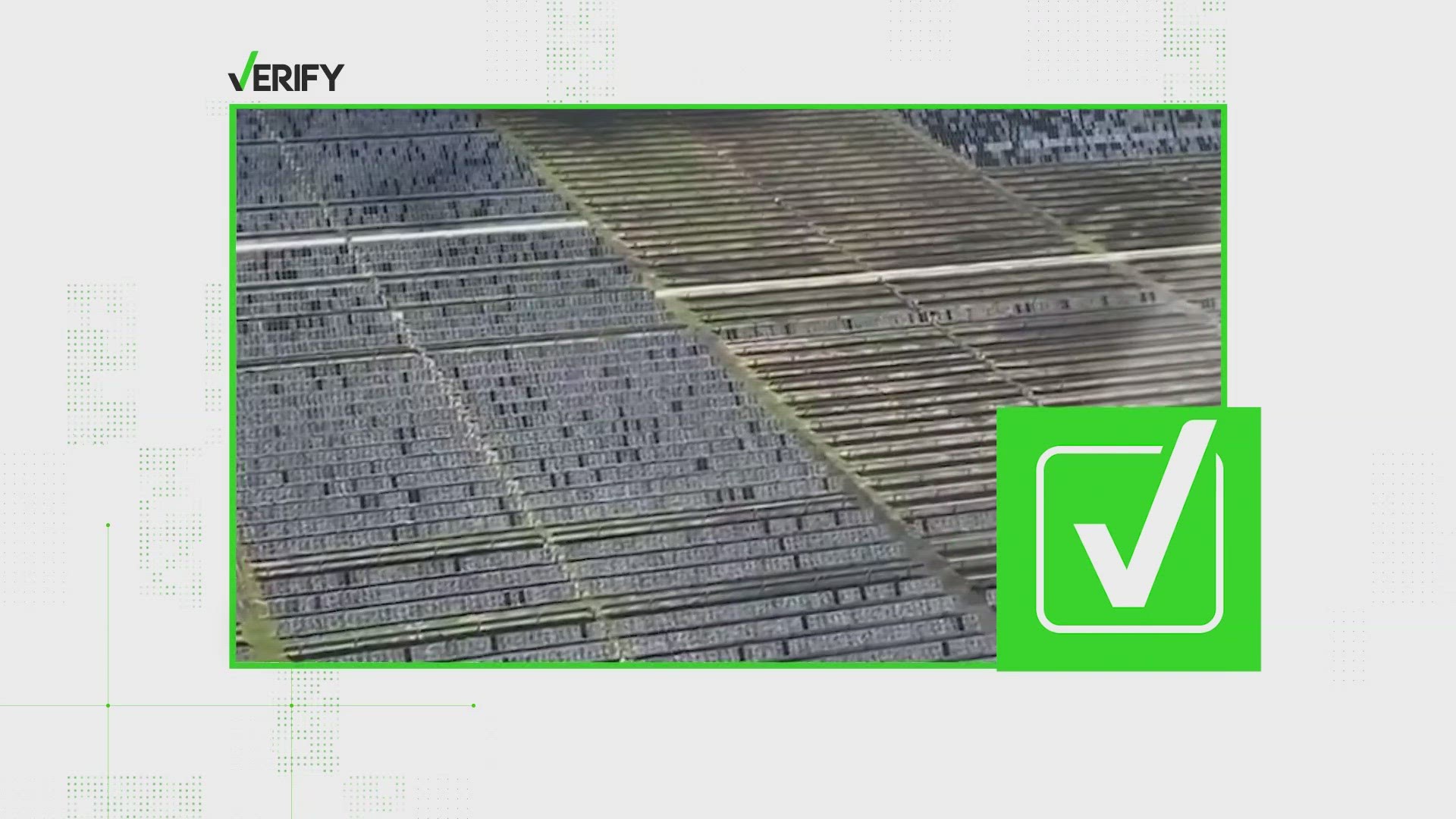DAMON, Texas — A viewer asked if a viral video of several damaged solar panels in Damon, Texas is real. The post has been viewed on social media more than 4 million times.
THE QUESTION
Is the viral video of damaged solar panels real?
THE SOURCES
THE ANSWER
The video is real. The KHOU 11 Verify team tracked down the pilot who shot the video Ryan Ashcraft of Ashcraft Aviation in Bay City, Texas.
WHAT WE FOUND
The March 15 storm moving through Texas produced several hail reports according to The National Weather Service. A helicopter pilot flying a week after those storms witnessed thousands of damaged solar panels over Damon, Texas. The KHOU 11 Verify team tracked down the pilot, Ryan Ashcraft. Ashcraft shared his reaction to seeing the vast land of damaged panels.
In a clip of the video shared with the KHOU 11 Verify team, Ashcraft says, "Oh my gosh it looks like they just got peppered."
In a statement, the developer, Copenhagen Infrastructure Partners (CIP), tells the KHOU 11 Verify team, "On March 15th, a hailstorm caused solar panel damage to Fighting Jays Solar, a 350 MW project located in Fort Bend County, Texas. We are currently assessing the extent of the impact of the storm on the generation of the project, while the plant continues to safely operate at a reduced capacity. The silicon-based panels contain no cadmium-telluride and we have identified no risk to the local community or the environment.”
Advanced Power Alliance (APA), in a statement, said, “A recent hail event in Fort Bend County has prompted questions as to whether damage to a utility-scale solar power facility can have adverse environmental or health implications for the surrounding community. Solar panels are built to withstand harsh conditions and extreme weather events, such as hail storms, and panels do not contain sufficient amounts of hazardous materials to be harmful, even in the highly unlikely event that the several layers of protection within the panels are compromised. Much of the disinformation spread following the recent weather event focused on the concern that cadmium telluride was present in the panels. While cadmium telluride is seldom used as a component in modern solar panels, older panels did sometimes contain small amounts. Still, such small amounts of cadmium telluride, which does not dissolve in water, makes groundwater contamination nearly impossible.”

